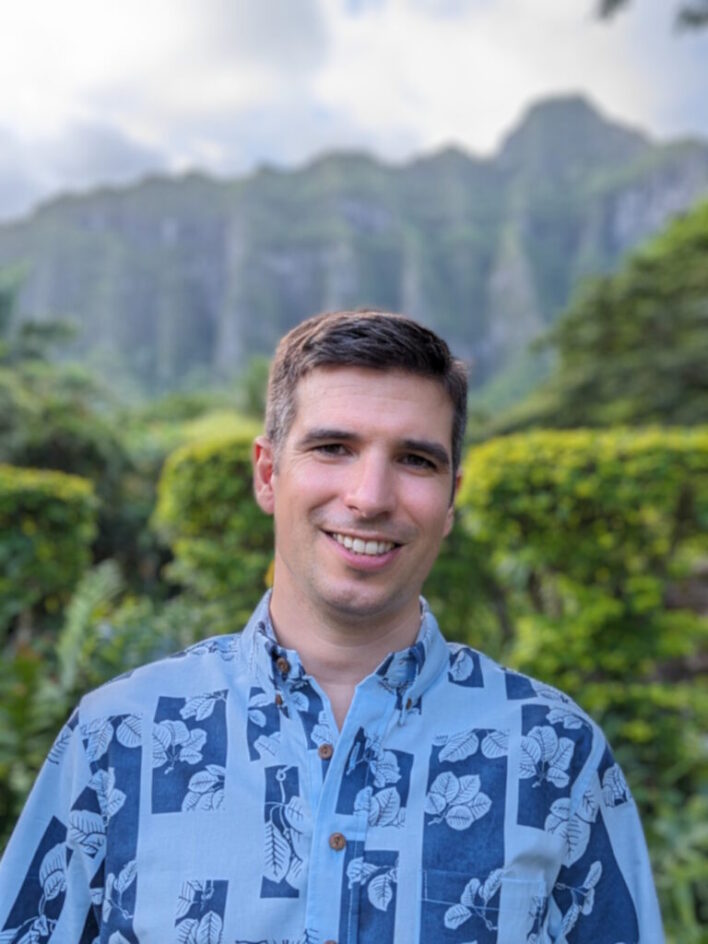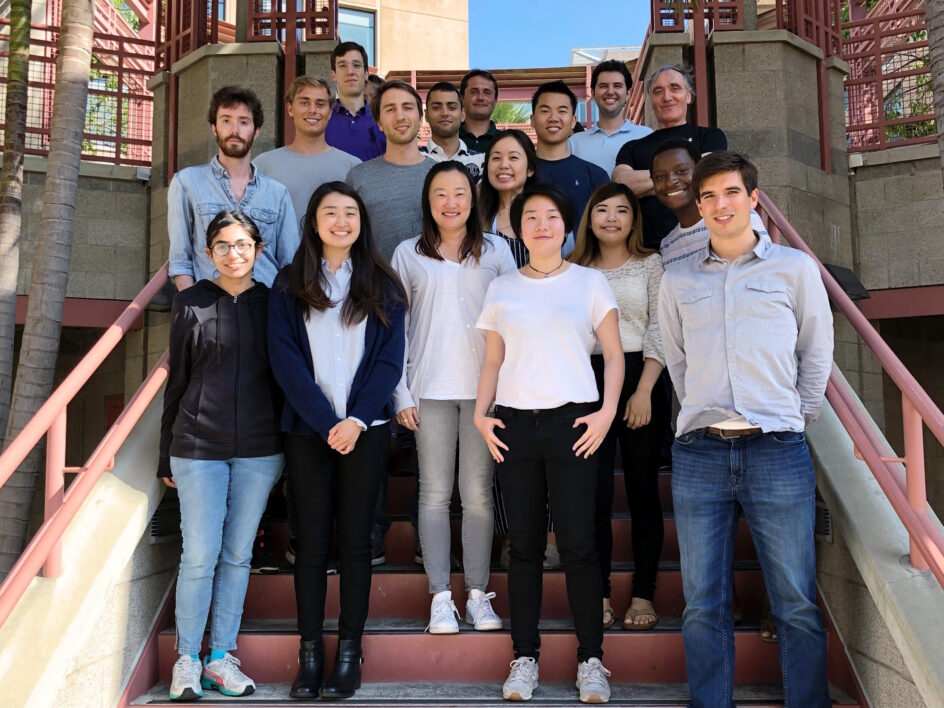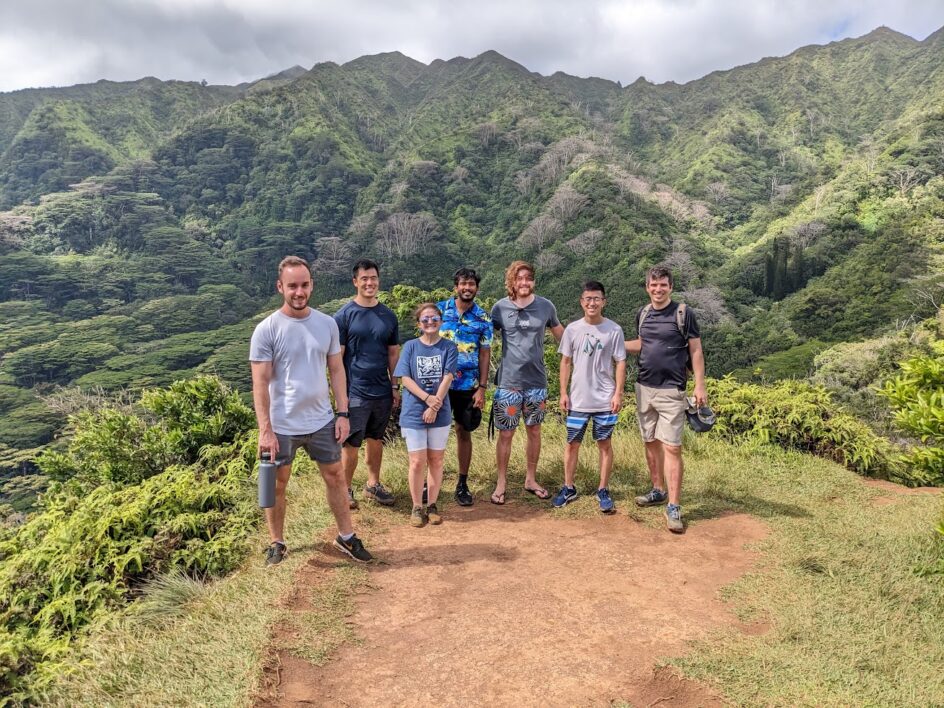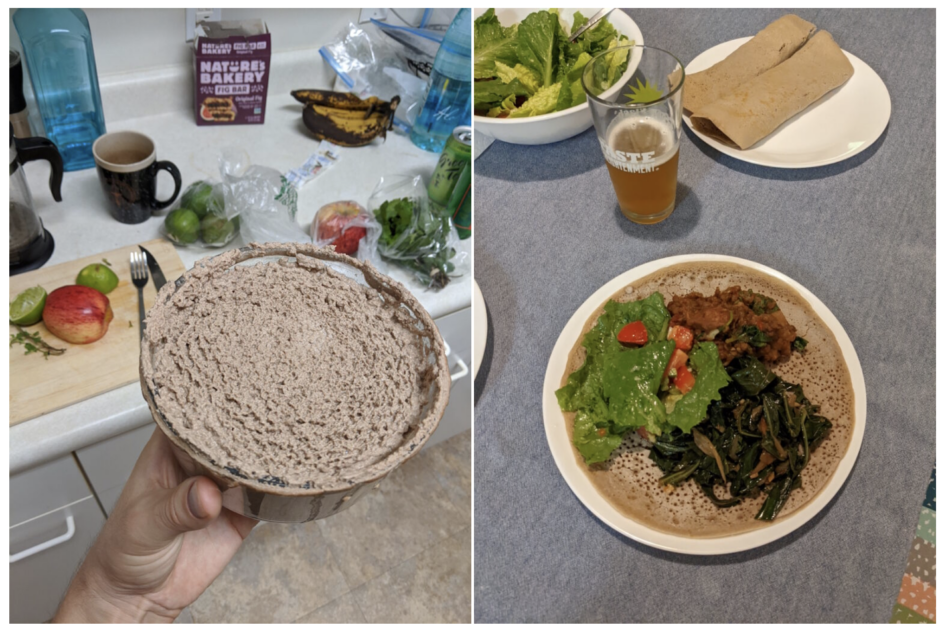Alumni Spotlight: From Cancer to Climate Change, Peter Sadowski Applies Machine Learning to Address Real-World Problems

When Peter Sadowski was visiting potential grad schools in hopes of exploring ways to apply machine learning to scientific applications, he was told to talk to Pierre Baldi, Distinguished Professor of computer science at UC Irvine. “I joined Pierre’s lab that fall,” says Sadowski, who earned a B.S. in computer science from Caltech. He went on to earn his Ph.D. in computer science from UCI’s Donald Bren School of Information and Computer Sciences (ICS). This October, Sadowski will return to UCI, where Baldi will introduce his former student as a guest speaker for the Southern California AI and Biomedicine Symposium 2023. Sadowski will discuss his work on AI systems that detect tumors from breast ultrasound imaging.
Now an associate professor of information and computer sciences at the University of Hawaii at Mānoa, Sadowski helps lead the AI Precision Health Institute, an organization he co-founded to reduce the burden of cancer in Hawaii and the Pacific Islands. He also recently received an NSF CAREER award to explore using machine learning to help Hawaii adapt to climate change.
How did you become interested in computer science?
As an undergraduate, I spent a summer working in a neuroscience research lab and saw that programming was an essential skill for doing modern science. I wasn’t particularly interested in being a software engineer, but I was excited about the advanced data analysis techniques that were used to analyze brain imaging data. So I majored in computer science while taking as many statistics and math courses as I could.
What led you to UC Irvine for your Ph.D.?
I visited multiple top computer science graduate schools. I told a professor at another university that I was interested in applying machine learning to scientific applications, and he said, “You should really talk to Pierre Baldi at UC Irvine.” I joined Pierre’s lab that fall.

Can you tell us a bit about your upcoming talk for the AI & Biomedicine Symposium?
The U.S.-Affiliated Pacific Islands, including Guam, American Samoa and Micronesia, suffer high rates of advanced-stage breast cancer. This is primarily due to less access to screening mammography, which detects tumors early, before they become fatal. Artificial intelligence has the potential to make handheld ultrasound imaging an alternative screening technology to mammography, which would enable better screening in remote and low-income areas around the world. Thus, one of our projects is to develop and test AI systems for detecting tumors from breast ultrasound imaging.
Can you also talk about being a co-founder and director of the AI Precision Health Institute?
The AI Precision Health Institute was born from a collaboration with John Shepherd at the University of Hawaii Cancer Center, a leading expert in medical imaging technologies. Many computer science students are eager to apply the latest developments in AI to medical applications, but it takes an interdisciplinary team to do high-impact work. The institute brings together students and researchers for monthly public seminars and project collaborations. It has been a lot of fun and is very rewarding.

And you’re also studying how machine learning can help Hawaii adapt to climate change?
I am very excited about using AI to help model weather and climate.
A challenge in modeling weather and climate is the high degree of uncertainty. Generative-AI models that create realistic images from text prompts, such as Midjourney, are very effective at modeling probability distributions over image-like data. My group has demonstrated their application to probabilistic weather forecasting, and we recently received an NSF CAREER awardto develop these methods. Hawaii is a particularly interesting place to do this research because the state relies heavily on the weather for renewable energy, and people are very motivated to protect the islands from the effects of climate change.
What about the fires in Maui?
The Maui fires have greatly affected the community here. Many people in Honolulu know someone who lost a house or family member in the fires. Hawaiian Electric is under scrutiny for whether they did enough to prevent this disaster. One action that a utility can take is to cut off power to areas when there is lots of dry brush and high winds; California does this. Better data and short-term weather forecasting could help make these decisions. On the climate scale, better models for predicting risks of drought and extreme weather can help make land-use decisions.
What are your thoughts on the future of AI and its impact on society?
The machine learning models that power AI have steadily become more powerful with increases in computing power. This is exciting, because these are general-purpose methods that are transforming how we do medicine, engineering and science.
On the other hand, there are clear dangers to society. For example, the newly available chatbots and image generating models have made it easy to create counterfeit people and images; this will degrade our ability to trust others online.
What should students know about studying computer science?
Studying computer science is a great gateway into a wide variety of careers.
What’s a fun fact about you that many people don’t know?
During the pandemic, a friend taught me how to make injera, the Ethiopian sourdough flatbread made from teff grain, and now I cook it all the time. It’s fantastic with vegetarian stews!

What do you like best about working in academia?
Collaborating with smart people who are passionate about solving problems!
Register now to attend Sadowski’s talk on “AI in Ultrasound and DXA Imaging” on Monday, Oct. 9, at the Southern California AI and Biomedicine Symposium 2023.
— Shani Murray